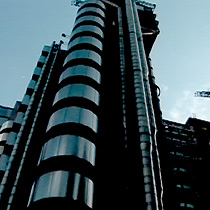2007年VOA标准英语-Architect Richard Rogers Wins Pritzker Prize(在线收听)
By Cathrine Drew
London
07 June 2007
The Italian-born, British architect Richard Rogers has been awarded this year's Pritzker Prize, the world's most prestigious prize in architecture. The jury cited the 73-year-old Rogers as "a champion of urban life who believes in the city as a catalyst for social change." Catherine Drew reports from London.
Richard Rogers's work is immediately recognizable.
Most famous perhaps is his first major work -- the Centre Pompidou in Paris -- that he designed with the Italian architect Renzo Piano.
Its radical design with many of the building's functions set on the outside was extremely controversial in the early 1970s. Now it is seen as a landmark that transformed a museum from an elite monument to a place of social and cultural exchange.
Rogers says he has fond memories of his time in Paris. "Clearly it was a very exciting period. It was a period of political upheaval in the 60s and it was also a period where people were looking at how to repair a city and the society. Paris gave us an opportunity to do a building, which was a very public building, which was my principle interest, but to also heal a small part of a city, which is a pretty unusual thing in your early 30s."
Rogers says he did not receive any new commissions for two years after completing the Centre Pompidou and considered giving up on architecture. Since that time, though, he has established offices in Spain and Japan and received commissions from all over the world.
 |
| Lloyds building |
The Pritzker jury considers an architect's entire body of work in awarding the prize and its $100,000 grant.
Martha Thorn is executive director of the Pritzker prize. "Why Lord Rogers and not someone else? That is a decision the jury makes, and while I can't reveal the discussions, I can indicate some of the things that did impress them. Certainly his commitment to sustainability, his commitment to communities, in other words his understanding of broader issues, as seeing architecture not just as an individual building, but as a building block of a community, of a city, of a region."
Rogers' Terminal Four for Madrid's Barajas airport also won the acclaimed Sterling prize last year. The prize honors the building seen as most significant in the evolution of architecture. Rogers has advised both the Spanish and British authorities on city planning and design. "I have been working very hard on cities in Britain. Ninety percent of people, in England specifically, 90 percent of us live in cities. Cities have had a tremendously difficult time. People have been leaving cities. That is a disaster for cities. We have put programs together to attract people back to cities and people are moving back to city centers."
Current major projects by Rogers and partners include Tower Three of the World Trade Center. Rogers says it is designed to create the effect of reaching into the sky.
Hattie Hartman is one of the editors of the publication The Architect's Journal and says, "Many architects have a dedication to art. Many Pritzker prizewinners have had a more narrow view of their profession and are interested in the art of architecture. But Rogers has interest in architecture in its widest sense and I think that is very much to be applauded."
Later in the year, the Centre Pompidou in Paris will stage an exhibition of Rogers's work.